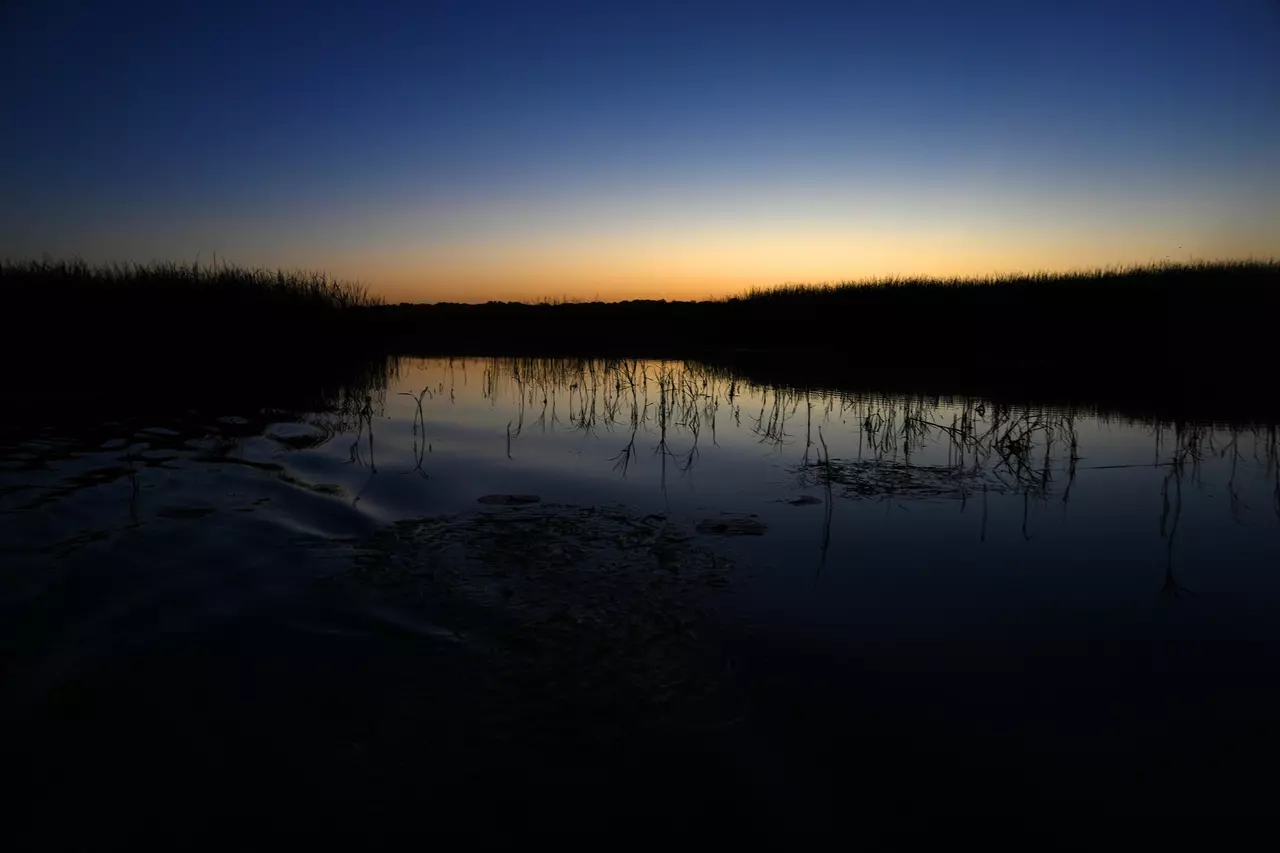

One of Minnesota’s healthiest lakes is hidden among corn and soybean fields
NICOLLET, Minn. — In the heart of rural Minnesota, surrounded by some of the most heavily farmed and drained land in the Midwest, is a vast lake with water that is remarkably clear. On Swan Lake, thick stands of bulrush and cattails stretch nearly a mile from shore and form narrow channels just wide enough to navigate a canoe. Inside those channels are gaps in the grasses, where wood ducks ...

The setting sun illuminates the Swan Lake Wildlife Management Area Friday, Oct. 10, 2025, near Nicollet, Minnesota.
Anthony Souffle/The Minnesota Star Tribune/TNS
NICOLLET, Minn. — In the heart of rural Minnesota, surrounded by some of the most heavily farmed and drained land in the Midwest, is a vast lake with water that is remarkably clear.
On Swan Lake, thick stands of bulrush and cattails stretch nearly a mile from shore and form narrow channels just wide enough to navigate a canoe. Inside those channels are gaps in the grasses, where wood ducks rest in the soft light of the setting sun until the sound of a paddle in the water flushes them out. The birds fly to open water at the center of the lake, where they join flocks and rafts of thousands of others. There they dive down to gorge on one of the finest caches of wild celery and sago pondweed in North America.
Once famous for duck hunting, Swan Lake has been brought to the brink of death time and again over the last 150 years. Conservationists have restored it to one of the healthiest lakes in Minnesota. Its plant life is thriving.
Swan was one of just 28 lakes out of 3,000 rated in Minnesota to receive a perfect 100 score for the condition of its plant life. The other 27 are lakes in pristine northern forests, with the majority in or near the Boundary Waters and Voyageurs National Park.
Swan Lake, in southern Nicollet County, is encircled by about 200,000 acres of corn and soybean fields, along with all the fertilizers, pesticides and drainage ditches that keep those fields farmable. The lake has at times been overrun by invasive carp and pet goldfish, its water turned into a cloudy pea-green stew. The landowners on its shore once fought all the way to the state Supreme Court to have the lake drained and turned into something more profitable.
...
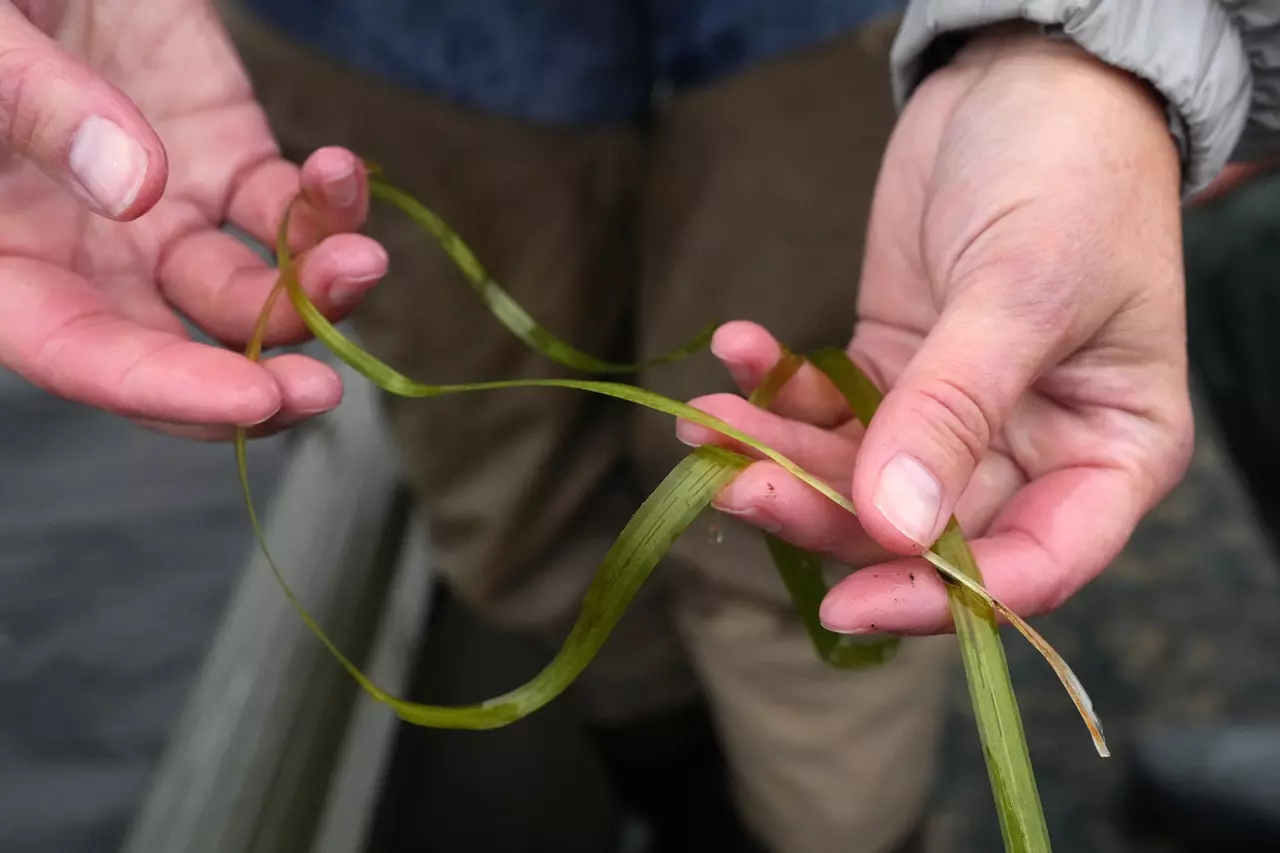
Nicole Hansel-Welch, the Minnesota DNR shallow lakes program supervisor, pulls wild celery from the water while surveying the Swan Lake Wildlife Management Area Tuesday, Oct. 14, 2025, near Nicollet, Minnesota.
Anthony Souffle/The Minnesota Star Tribune/TNS
Now it’s one of the great remnants of a lost prairie. Its recovery offers a blueprint for saving some of the state’s most troubled waters.
“Swan is definitely the poster child for how good a lake can be,” said Tori Drake, a wildlife lake specialist for the Minnesota Department of Natural Resources.
The Minnesota Department of Natural Resources graded the overall health of Swan Lake a B+, one of the highest of any lake in southern Minnesota, where watersheds have been extensively altered.
The DNR started issuing grades to the state’s lakes in 2023 to help residents learn about their condition. The letter grade, from A+ to F, denotes the health of a lake and how far it has departed from what a lake of its size, depth and region should be. The score is based on a lake’s water quality, populations of native fish and plants, and the disturbance of its shoreline and watershed.
Swan, like most lakes in the area, has too much phosphorus pollution in the water to receive an A. Its overall grade puts it on par with Lake Vermilion and Upper Red Lake, two of the most popular destinations in the North Woods, as well as with Mitchell Lake in Crow Wing County, which may be the best place in Minnesota to be a fish.
Scientists say Swan Lake is the largest prairie pothole in North America. These unique waterways are shallow bowls in the earth left behind by the retreating glaciers about 11,000 years ago. Prairie potholes stretch from Minnesota and the Dakotas into Ontario and provide crucial ecological benefits.
...
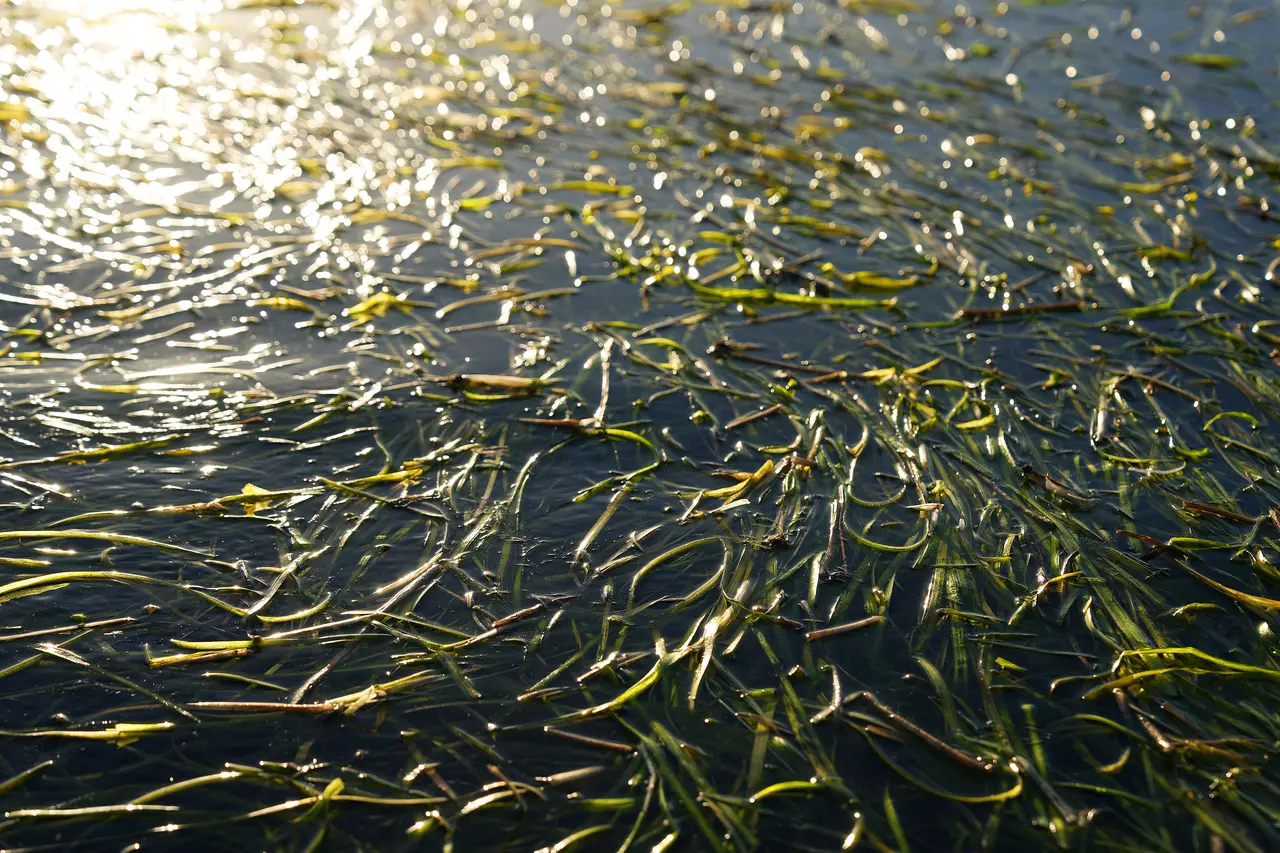
Wild celery floats on the surface of the water at the Swan Lake Wildlife Management Area Friday, Oct. 10, 2025, near Nicollet, Minnesota.
Anthony Souffle/The Minnesota Star Tribune/TNS
They evolved to fill with rain and snowmelt during wet periods, and then go dry during droughts. The dry periods keep fish populations from growing too large, allowing plants to re-germinate. Those plants feed the hosts of ducks and waterfowl that migrate through or nest in Minnesota each year.
About half of the continent’s ducks and geese rely on prairie potholes. Herons, egrets, cranes and songbirds forage in their waters.
The most striking features of Swan Lake are the dozens of islands of bulrush that sway in the wind. That may well have been true in 1854, when a writer from the St. Paul Weekly Minnesotian declared Swan Lake the second-most beautiful lake, behind only Lake Minnetonka, in what was then a U.S. territory.
“Its borders are covered with mighty oaks, those noble monarchs of the forest, while lovely prairies extend beyond the sight, from which pours forth inexhaustible streams of pure water,” the unnamed writer wrote. “I have measured blades of grass which were nine feet long. Beat that who can.”
Dakota, Sioux and other tribes had hunted Swan Lake’s shore for thousands of years before they were forced out. In the late 1890s, duck hunters traveled by train to shoot as many birds as they could to supply restaurants and markets from St. Paul to Chicago.
Local opinions of the value of the lake had begun to shift, however.
By the early 1900s, after a period of dry spells briefly turned the lake into mud, local farmers started trying to have Swan Lake permanently drained. Similar efforts across the prairie region of western Minnesota were rapidly destroying the natural wetlands, eventually converting 95% of them to valuable farmland.
...
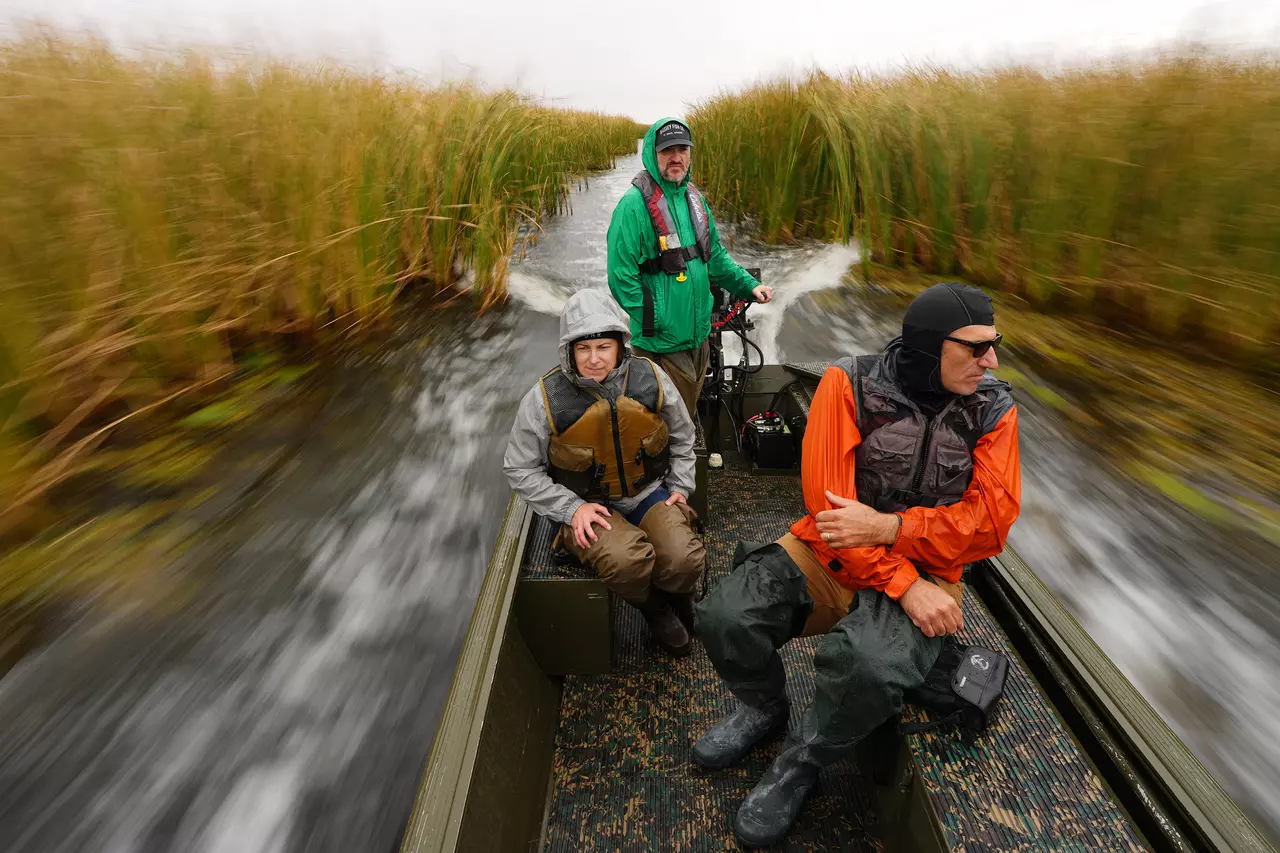
Climatologist Kenny Blumenfeld sits with Nicole Hansel-Welch, the Minnesota DNR shallow lakes program supervisor, as Nick Brown, the shallow lakes and Red River basin specialist, motors in from surveying the Swan Lake Wildlife Management Area Tuesday, Oct. 14, 2025, near Nicollet, Minnesota.
Anthony Souffle/The Minnesota Star Tribune/TNS
In 1917, a coalition of farmers asked the Minnesota Supreme Court to step in, arguing Swan Lake was “shallow, marshy and grassy, nothing but a large slough, full of noxious weeds,” and that “the water is stagnant and gives off noxious odors and is injurious to the public health.”
The proposal was fiercely fought by downstream cities, which did not want to deal with the excess water. It was fought, too, by a coalition of duck hunters, who argued that the damage to birds and waterfowl would far outweigh the benefits to a few local farmers.
A biologist from the U.S. Department of Agriculture traveled from Washington to testify that it would be “suicidal and a crime to drain Swan Lake,” for all the harm it would do to nearby drinking wells and to insect-eating birds that kept pests away from crops.
The Supreme Court denied the petition in 1924. But that didn’t mean people were content to leave Swan Lake alone.
In the 1950s, a dam was built at Swan Lake’s lone outlet, stopping the natural ebb and flow of the lake and turning the water stagnant. Water quality began a slow decline over the next 30 years until, by the mid-1980s, the lake was unrecognizable.
In a 1984 survey, state biologists found only eight duck broods on the lake, raising no more than 24 ducklings, down from about 18,000 ducks less than 40 years earlier.
The findings, spread far and wide in a grassroots movement led by conservation groups such as Nicollet Conservation Club and Ducks Unlimited, shocked the Legislature into taking action. They soon set aside $2 million from the state’s Outdoor Heritage Fund to restore the lake.
...
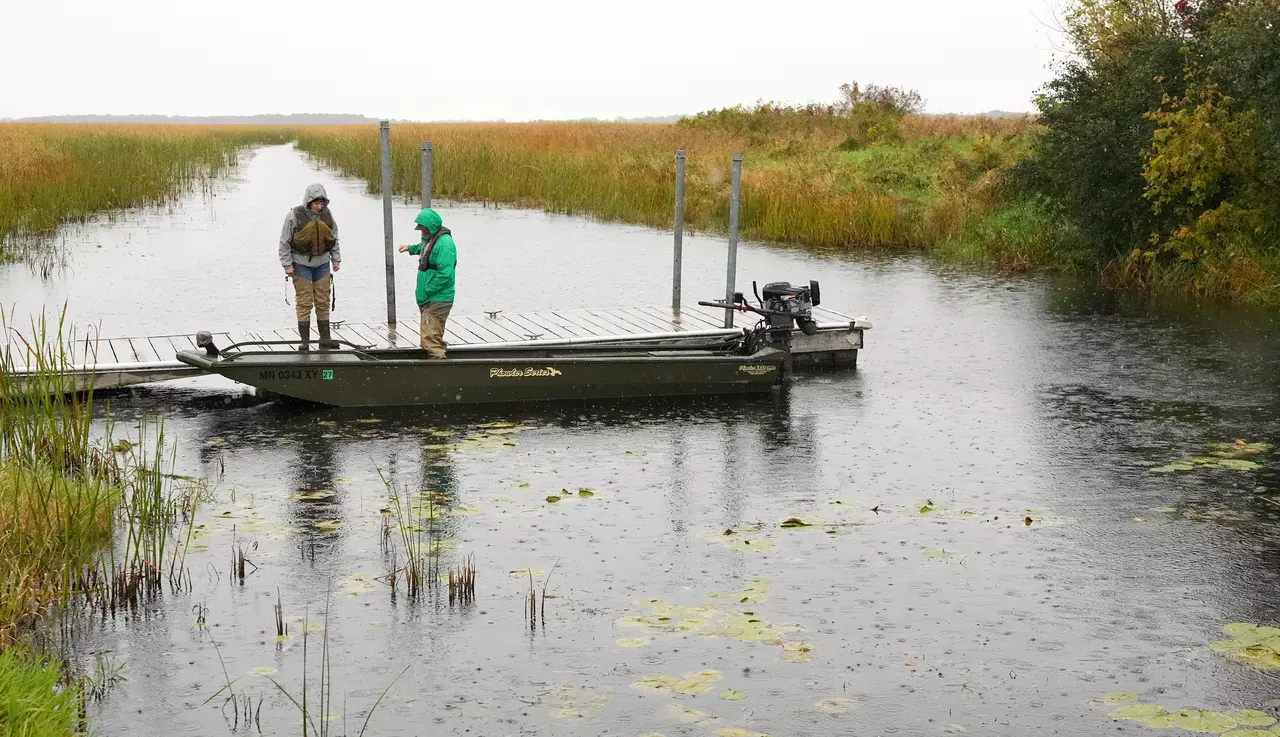
Nicole Hansel-Welch, the Minnesota DNR shallow lakes program supervisor, talks with Nick Brown, the shallow lakes and Red River basin specialist, as they prepare to survey the Swan Lake Wildlife Management Area Tuesday, Oct. 14, 2025, near Nicollet, Minnesota.
Anthony Souffle/The Minnesota Star Tribune/TNS
The water levels had been too high for far too long, biologists found. Sunlight was no longer penetrating to the lake bottom, causing wild celery and other native plants to die off. Unnaturally high numbers of carp and other fish were making the water murky, compounding the problem. Too much of the surrounding land had been converted to crops, pumping excessive nutrients into the lake.
The first step was to replace the dam, allowing the DNR to let the lake naturally drain for the first time in three decades. The deepest parts of the lake are only about 4 feet deep. Carp and other fish died off as the water level fell. Clearer water from snowmelt and rain refilled the lake the following spring.
The second step was to protect the land immediately surrounding the lake. The DNR secured about 3,000 acres, short of its goal but still enough to transform the lake.
Wild celery started to grow again. In the early 1990s, the birds started to return. By 2001, the lake had gone from producing 24 birds to an estimated 8,000 a year.
The condition of Swan Lake has been largely stable ever since. The DNR needs to conduct drawdowns every five years or so to refresh the system and allow plants to thrive, Drake said.
The agency still hopes to restore and protect another 5,000 acres near the lake, she said, and works to buy properties as they become available.
Shallow lakes are incredibly resilient ecosystems, said Nicole Hansel-Welch, the supervisor of the DNR’s shallow lakes program.
...
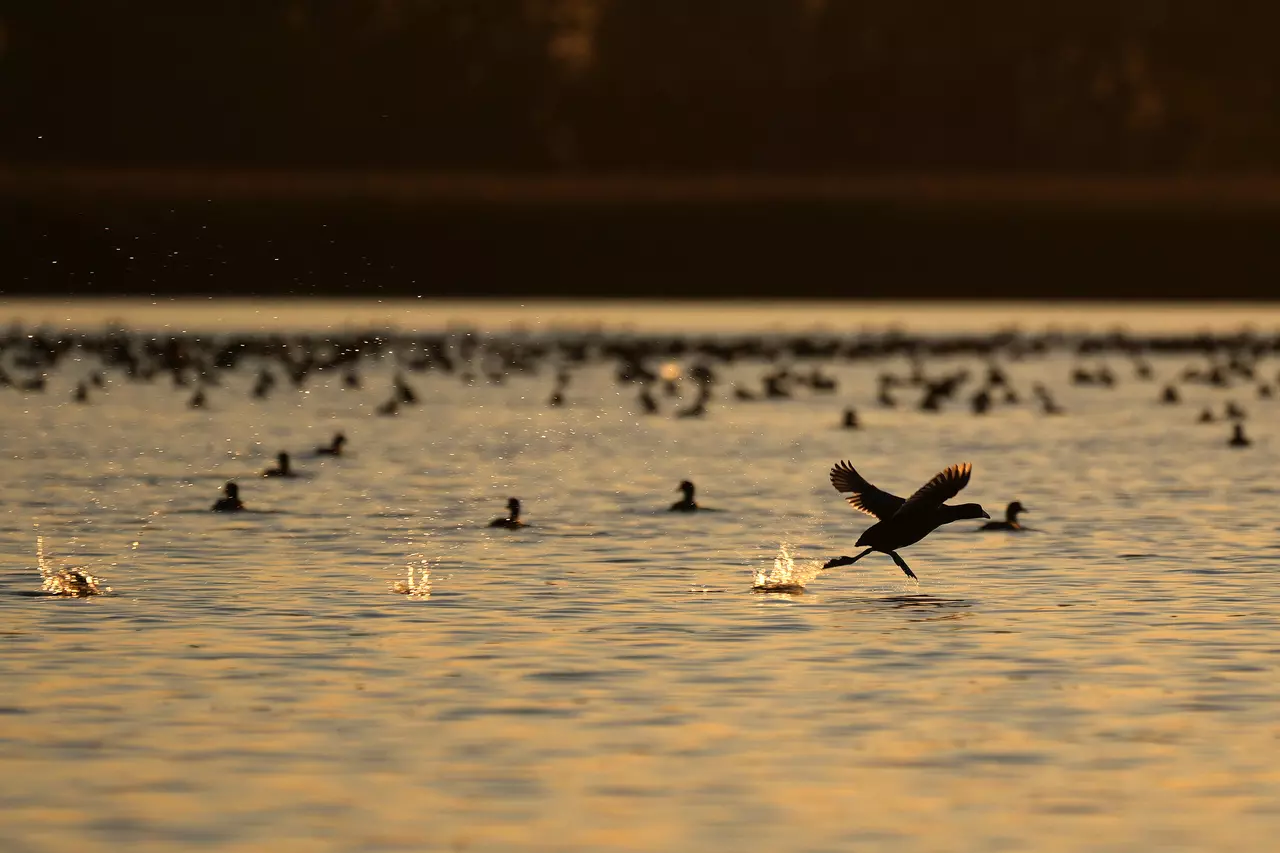
An American coot, members of the rail family, skips across the water as it takes flight at the Swan Lake Wildlife Management Area Friday, Oct. 10, 2025, near Nicollet, Minnesota.
Anthony Souffle/The Minnesota Star Tribune/TNS
“It’s just such a fast turnaround, where you see a lake go from a turbid pea soup to … this," she said from a small boat at the center of Swan Lake last week. Hansel-Welch pointed to the clear water around her and the ribbons of wild celery floating near the surface.
About 100 yards away, something spooked a raft of American coots, a small, black duck-like bird with a stark white beak. One coot took off, wingtips beating against the water, and immediately the other coots rose, too. They swarmed just a few feet off the water, and the sound of a thousand wings echoed across the lake. Just as suddenly they landed, resting again on the clear lake.
____
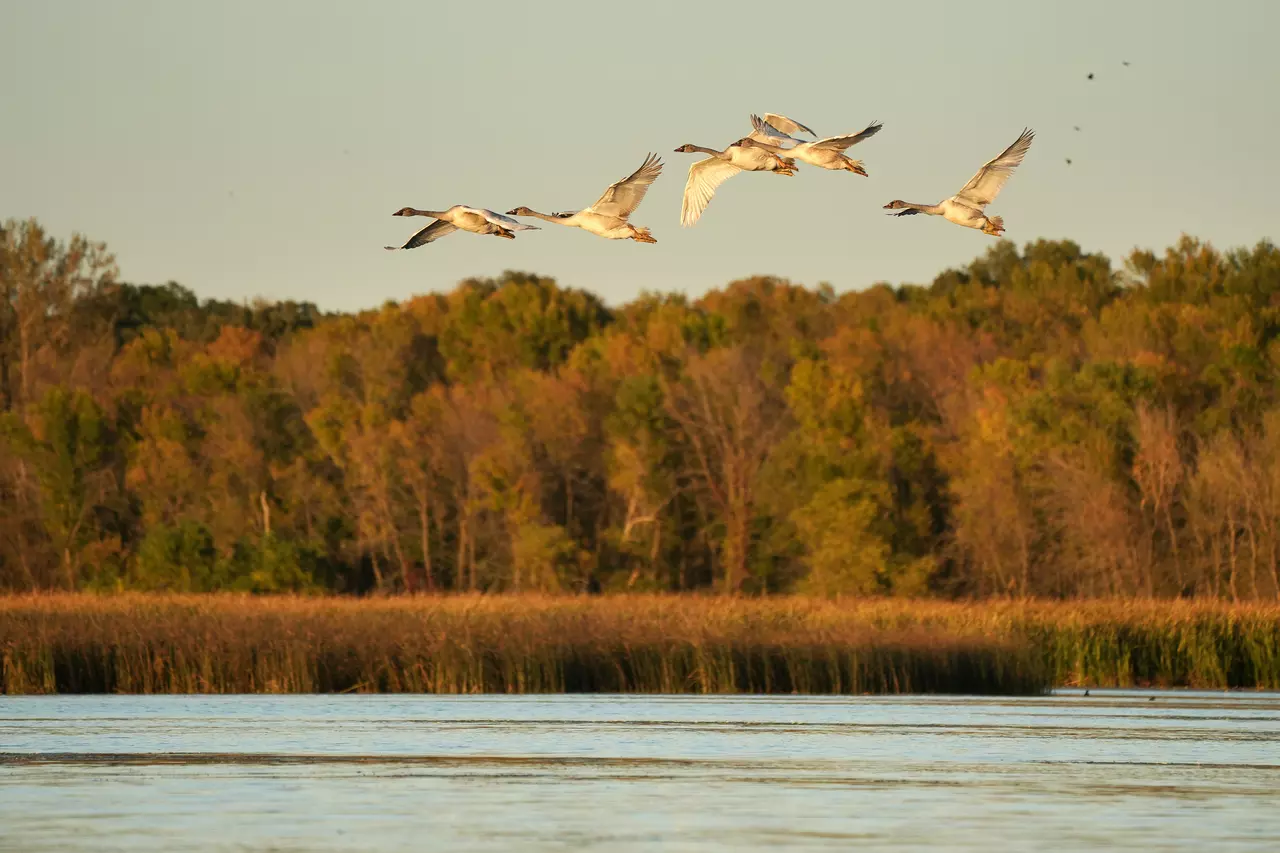
Trumpeter swans take flight over the Swan Lake Wildlife Management Area Friday, Oct. 10, 2025, near Nicollet, Minnesota.
Anthony Souffle/The Minnesota Star Tribune/TNS